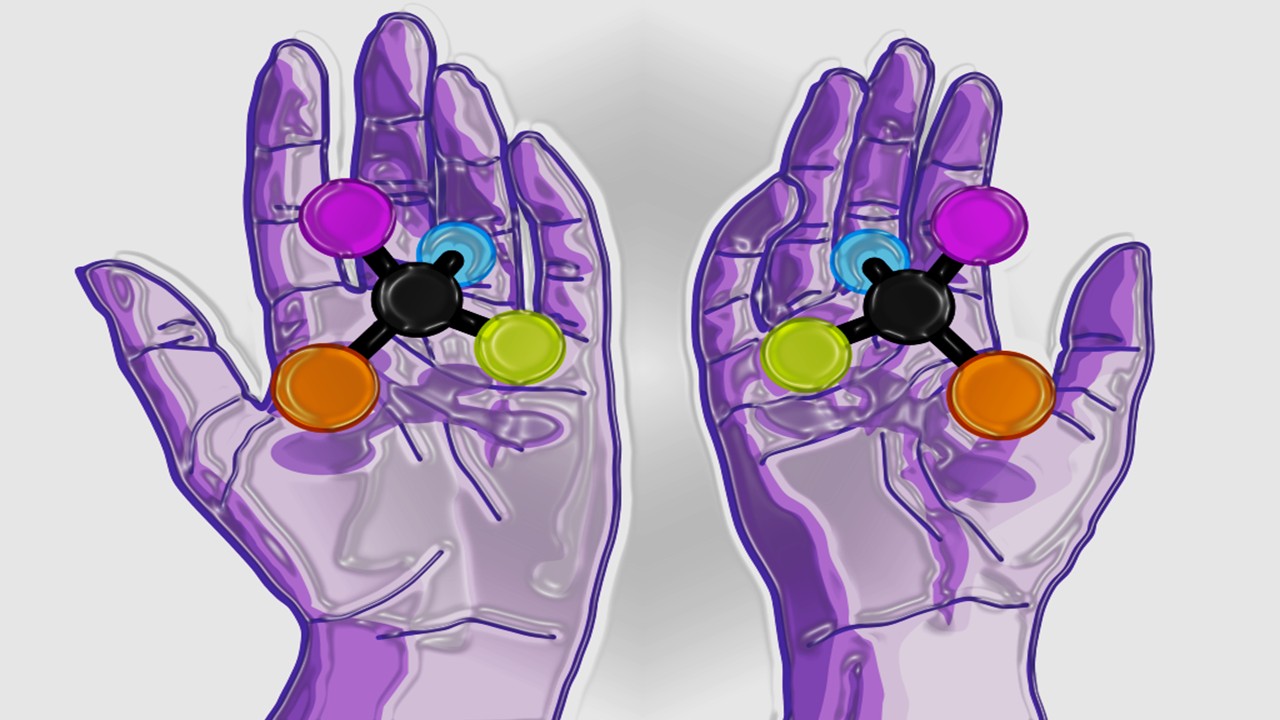The once-static paradigm of molecular polarity in drug development has given way to a dynamic engineering discipline where strategic charge flipping unlocks unprecedented therapeutic possibilities. Modern medicinal chemists now treat polarity not as an immutable property, but as a tunable parameter that can be dialed up or down to navigate biological barriers, evade resistance mechanisms, and precisely time drug action. This polarity engineering extends far beyond simple logP optimization—it encompasses transient charge masking, pH-dependent polarity switching, and even light-activated dipole modulation. The implications cascade across drug classes: antibiotics that become membrane-permeant only in bacterial cytoplasm, kinase inhibitors that shed solubility groups after tumor penetration, and CNS drugs that toggle blood-brain barrier permeability on demand. This represents nothing less than a reinvention of classical structure-activity relationship principles for the era of precision medicine.
The Permeability-Efficacy Paradox and Its Charge-Based Solutions
The fundamental challenge of drug design—simultaneously achieving sufficient aqueous solubility for distribution and lipophilicity for membrane permeation—has found elegant solutions in dynamic polarity modulation. Medicinal chemists now recognize that traditional compromises between these opposing requirements often yield suboptimal drugs that either fail to reach targets or become trapped in off-tissue compartments. Modern approaches instead engineer molecules that can switch between polar and nonpolar states in response to biological cues.
Pro-drug strategies exemplify this shift. Where first-generation pro-drugs simply masked polar groups with metabolically labile esters, contemporary designs employ sophisticated polarity switching mechanisms. Some kinase inhibitors now incorporate enzyme-cleavable zwitterionic motifs that render the drug highly soluble during systemic circulation, then shed both positive and negative charges upon tumor-specific protease activation. This dual charge neutralization creates a dramatic logP shift that promotes rapid cellular uptake precisely where needed.
pH-sensitive polarity provides another dimension. Antibiotics targeting Gram-negative bacteria exploit the pH gradient across bacterial membranes, incorporating basic amines that protonate in acidic periplasmic spaces. This sudden charge acquisition traps molecules inside bacterial cells—a “polarity trap” strategy that overcomes efflux pump resistance. The approach has been refined with pKa tuning to match specific pathogens’ internal pH profiles, creating species-selective accumulation.
The most innovative solutions involve reversible cyclization. Some antiviral compounds cyclize into nonpolar lactones during membrane transit, then spontaneously reopen to polar carboxylates in aqueous compartments. This molecular shape-shifting allows repeated tissue penetration and redistribution that maintains therapeutic concentrations without peak-related toxicity.
Emerging work extends these principles to intermolecular interactions. Drugs engineered with switchable dipoles can alternate between protein-bound polar conformations and membrane-traversing nonpolar states—a form of “dynamic pharmacophore” that optimizes both target engagement and tissue distribution.
Blood-Brain Barrier Navigation Through Charge Masking
CNS drug development’s longstanding polarity conundrum—sufficiently polar to avoid plasma protein binding, yet nonpolar enough to cross the blood-brain barrier—is yielding to advanced charge masking strategies. Neuropharmacologists emphasize that traditional approaches either sacrificed potency for permeability or relied on invasive delivery methods. Modern designs instead incorporate environmentally sensitive protecting groups that modulate polarity in transit.
Temporary ion pairing represents one breakthrough. By complexing cationic CNS drugs with fatty acid anions, developers create neutral ion pairs that traverse endothelial membranes before dissociating in brain interstitial fluid. The approach has proven particularly effective for neuropeptide analogs, where the fatty acid moiety both masks charge and provides sustained release through depot formation.
Enzyme-activated polarity switching offers more precise control. Some neuroprotective agents are designed as polar phosphates that remain excluded from the brain until encountering neuronal phosphatase activity. The resulting dephosphorylation not only activates the drug but triggers a polarity shift that traps it in target cells—a dual-action design that maximizes therapeutic specificity.
Light-activated charge modulation pushes this further. Photoswitchable azobenzene linkers can conceal polar groups under specific wavelengths, allowing noninvasive control over blood-brain barrier permeability. Irradiation at the target site triggers cis-trans isomerization that reveals buried charges, effectively locking drugs in desired brain regions with spatiotemporal precision.
The frontier involves hijacking endogenous transport systems. Engineered “polarity mimics” that transiently resemble nutrient neurotransmitters can piggyback on LAT1 or GLUT transporters, then undergo intracellular transformations that restore therapeutic structures. This molecular Trojan horse strategy has opened the blood-brain barrier to previously excluded biologics and gene therapies.
Charge Flipping to Overcome Antimicrobial Resistance
The antimicrobial resistance crisis has spurred innovative approaches where strategic polarity modifications restore activity against resistant strains. Microbiologists note that many resistance mechanisms—efflux pumps, membrane modifications, enzymatic inactivation—are fundamentally polarity-dependent defenses that can be circumvented through charge engineering.
Cationic polarity flipping exemplifies this. By redesigning fluoroquinolones as prodrugs that acquire permanent positive charges only after bacterial activation, researchers have created antibiotics that resist both enzymatic degradation and efflux. The acquired charge not only prevents pump-mediated expulsion but enhances binding to anionic bacterial membranes—a dual mechanism that overwhelms resistance adaptations.
pH-dependent charge inversion tackles another resistance pathway. Some β-lactam variants remain zwitterionic at physiological pH but flip to net negative charge in bacterial infection sites. This selective polarity shift exploits the fact that many resistance-associated β-lactamases are less efficient against negatively charged substrates, while target penicillin-binding proteins maintain affinity.
The most creative approaches involve “polarity decoys.” Vancomycin analogs now incorporate removable polar groups that mislead resistance enzymes into attacking non-essential regions of the molecule. After enzymatic cleavage, the drug’s true binding pharmacophore emerges—uncharged and fully active against the now-distracted resistance machinery.
Emerging work explores spatial charge separation. Tetracycline derivatives with strategically positioned charges can simultaneously engage both the ribosomal target and resistance-associated ribosomal protection proteins—essentially turning the resistance mechanism into an additional binding site that enhances rather than inhibits antibiotic action.
Tumor-Selective Polarity Switching for Precision Oncology
Cancer chemotherapy’s toxicity challenges are being addressed through polarity engineering that confines drug activation to malignant tissue. Oncologists highlight how traditional polarity optimization often improved tumor penetration at the cost of heightened off-target effects—a tradeoff modern approaches elegantly avoid.
Hypoxia-activated charge masking is particularly promising. Prodrugs designed to shed polar sulfonate groups only under low oxygen tension become trapped in hypoxic tumor cores, where both the polarity shift and oxygen deprivation prevent escape to healthy tissue. The approach has been refined with nitroaromatic triggers that respond to specific redox potentials characteristic of aggressive malignancies.
Tumor-specific enzyme substrates add another layer of control. Some kinase inhibitors now incorporate peptide sequences that are cleaved by tumor-associated proteases, removing polar solubilizing groups precisely at disease sites. The liberated drug not only gains membrane permeability but often exhibits enhanced target binding due to conformational changes linked to the polarity switch.
Charge-reversal nanoparticles represent a macroscopic application of these principles. Particles engineered to switch from anionic to cationic surface charge in acidic tumor microenvironments transform from stealthy circulation vehicles to tumor-adherent drug depots. This spatial polarity control enables millimeter-scale targeting precision previously achievable only with antibody conjugates.
The frontier involves dual-input polarity gates. Experimental systems now require both enzymatic cleavage and reducing conditions to trigger charge flipping—a logical AND gate that ensures activation only in tumors exhibiting both metabolic signatures. Such multi-requirement switches approach the specificity of biologics while maintaining small molecule advantages.
Photopharmacology: Light-Activated Polarity Modulation
The emerging field of photopharmacology has made polarity switching an externally controllable parameter, enabling precise spatiotemporal drug activation. Chemists designing these light-responsive systems emphasize that polarity modulation offers unique advantages over other photodynamic approaches—it’s reversible, tunable, and minimally perturbing to overall molecular structure.
Azobenzene-based switches dominate current designs. Incorporating this photoswitchable moiety near key ionizable groups creates molecules whose pKa shifts dramatically upon isomerization. A drug might be polar and water-soluble in its trans form, then become lipophilic and membrane-permeant after cis-photoisomerization—allowing light-directed tissue targeting with cellular precision.
Spiropyran-merocyanine systems offer complementary properties. These chromophores switch between neutral (closed) and zwitterionic (open) forms under different wavelengths, enabling orthogonal control over multiple polarity parameters. Some neural modulators use this to cross the blood-brain barrier as neutral spiropyrans, then convert to charged merocyanines that bind ion channels only at illuminated synapses.
Two-photon excitation extends these principles deeper into tissue. Molecular designs with large two-photon absorption cross-sections can be triggered by near-infrared light that penetrates centimeters into the body. This has enabled polarity-switched anticancer agents that activate only at focused tumor sites, sparing overlying healthy tissue.
The most advanced systems incorporate feedback control. Photoswitchable drugs paired with real-time mass spectrometry monitoring allow dynamic polarity adjustment to maintain therapeutic concentrations—a closed-loop precision dosing system that adapts to individual patient metabolism.
Electronically Tunable Bioorthogonal Polarity
The integration of bioorthogonal chemistry with polarity engineering has yielded drug systems whose charge states can be toggled by exogenous small molecule triggers—creating truly “dial-a-polarity” therapeutics. Chemical biologists note that this represents a paradigm beyond traditional prodrugs, allowing dynamic polarity adjustment even after administration.
Tetrazine-transcyclooctene click chemistry enables one approach. Drugs bearing hidden polar groups tethered via transcyclooctene can be unmasked by intravenous tetrazine administration—instantly flipping polarity to alter distribution. This has proven invaluable for antibiotics needing initial lipophilicity to reach infection sites, followed by polarity to enhance renal clearance and reduce toxicity.
Bioorthogonal protecting groups offer reversible control. Some neurologic agents now incorporate silyl ether-protected alcohols that can be deprotected by fluoride administration—switching from brain-penetrant to kidney-excreted forms on demand. The reverse reaction (protection) can be achieved with complementary reagents, enabling polarity cycling for extended therapy.
Transition metal catalysis in living systems pushes this further. Ruthenium-based catalysts administered separately can trigger polarity-switching reactions in vivo—such as alkyne hydration that converts nonpolar warheads to polar hydroxides precisely at target tissues. The catalysts themselves can be activated or deactivated with small molecules, adding temporal control.
The frontier involves autonomous bioorthogonal systems. DNA-based reaction networks that sense disease biomarkers can trigger polarity shifts without external input—creating truly “smart” drugs that self-adjust their distribution based on real-time physiological changes.
Quantum Chemical Approaches to Polarity Design
The predictive power of quantum chemistry is transforming polarity engineering from empirical trial-and-error to rational design. Computational chemists now employ density functional theory (DFT) and ab initio methods to predict not just static dipole moments, but how molecular polarization responds to environmental fluctuations—enabling drugs that “sense” their biological context.
Dielectric continuum modeling provides key insights. By simulating how solvent shells reorganize around potential drug candidates, researchers can predict which polarity patterns will maintain optimal hydration for solubility while allowing transient membrane partitioning. This has led to designs with anisotropic polarity—highly polar in specific vector directions that align with target binding sites while remaining moderately lipophilic overall.
Polarizability calculations inform dynamic designs. Drugs intended for polarity switching benefit from quantum mechanical modeling of how electron clouds distort under different pH or binding conditions. Some kinase inhibitors now incorporate polarizable aromatic systems that become transiently cationic only when engaged with target proteins—enhancing binding specificity through induced polarity complementarity.
Charge transfer complex engineering represents another frontier. Drugs designed to form weak complexes with endogenous metabolites can acquire context-dependent polarity shifts. Certain antiviral nucleosides, for example, temporarily borrow electron density from ATP in infected cells, becoming more lipophilic and thus better retained in viral replication compartments.
The most advanced applications involve machine learning trained on quantum chemical datasets. These models predict optimal polarity switching mechanisms for novel targets, suggesting where to place photoswitches, pro-drug linkages, or pH-sensitive groups to achieve desired distribution profiles—accelerating what was once a painstaking design process.
The Charge Landscape of Future Medicines
The strategic manipulation of molecular polarity has evolved from a crude solubility tool to a sophisticated control dimension that rivals traditional structure-activity relationships in importance. Modern drugs increasingly resemble smart materials whose properties adapt to biological contexts—polar when and where needed, nonpolar otherwise—blurring the line between pharmaceuticals and responsive nanosystems.
This polarity engineering revolution addresses pharmacology’s oldest challenge: getting the right amount of drug to the right place at the right time. By making charge states dynamically controllable, researchers are overcoming distribution barriers that have constrained drug design for generations while minimizing off-target effects.
The future likely holds drugs whose polarity can be adjusted noninvasively—whether by light, magnetic fields, or bioorthogonal triggers—creating truly tunable therapies. As quantum chemical prediction and synthetic biology converge with these approaches, we may see medicines that autonomously optimize their own distribution in response to real-time physiological changes. In this coming era, polarity won’t be a drug property—it will be a dial we turn to cure.
Engr. Dex Marco Tiu Guibelondo, B.Sc. Pharm, R.Ph., B.Sc. CpE
Editor-in-Chief, PharmaFEATURES

Subscribe
to get our
LATEST NEWS
Related Posts

Medicinal Chemistry & Pharmacology
Metabolic Saboteurs: Precision Drug Design Against Pathological Pathways
The next frontier in precision medicine lies in drugs that surgically disrupt disease-specific metabolic pathways and recalcitrant enzymes.

Medicinal Chemistry & Pharmacology
Chiral Warfare: How Mirror Molecules Are Revolutionizing Drug Design
Mirror-image molecules, known as enantiomers, are no longer mere curiosities but powerful tools reshaping drug discovery.
Read More Articles
Chemical Gale: How Wind Energy is Reshaping Industrial Manufacturing
The integration of wind energy into chemical manufacturing constitutes a fundamental reimagining of process chemistry.
Algorithmic Trials: How Decision Theory is Reshaping Decentralized Clinical Research
Decision theory offers a robust mathematical framework to design trials that enhance efficiency, uphold ethical standards, and better reflect the complexities of real-world therapeutic contexts.













